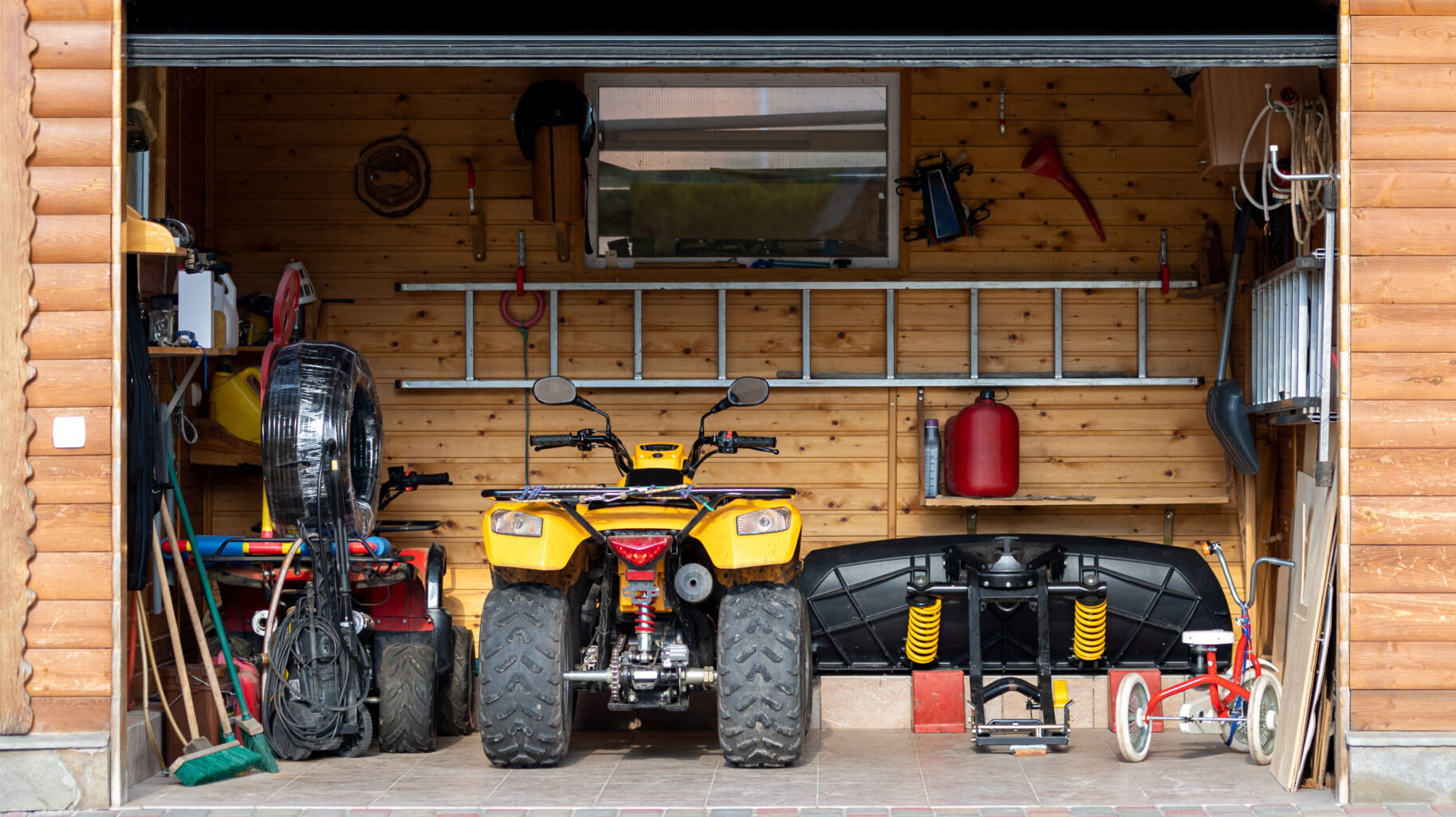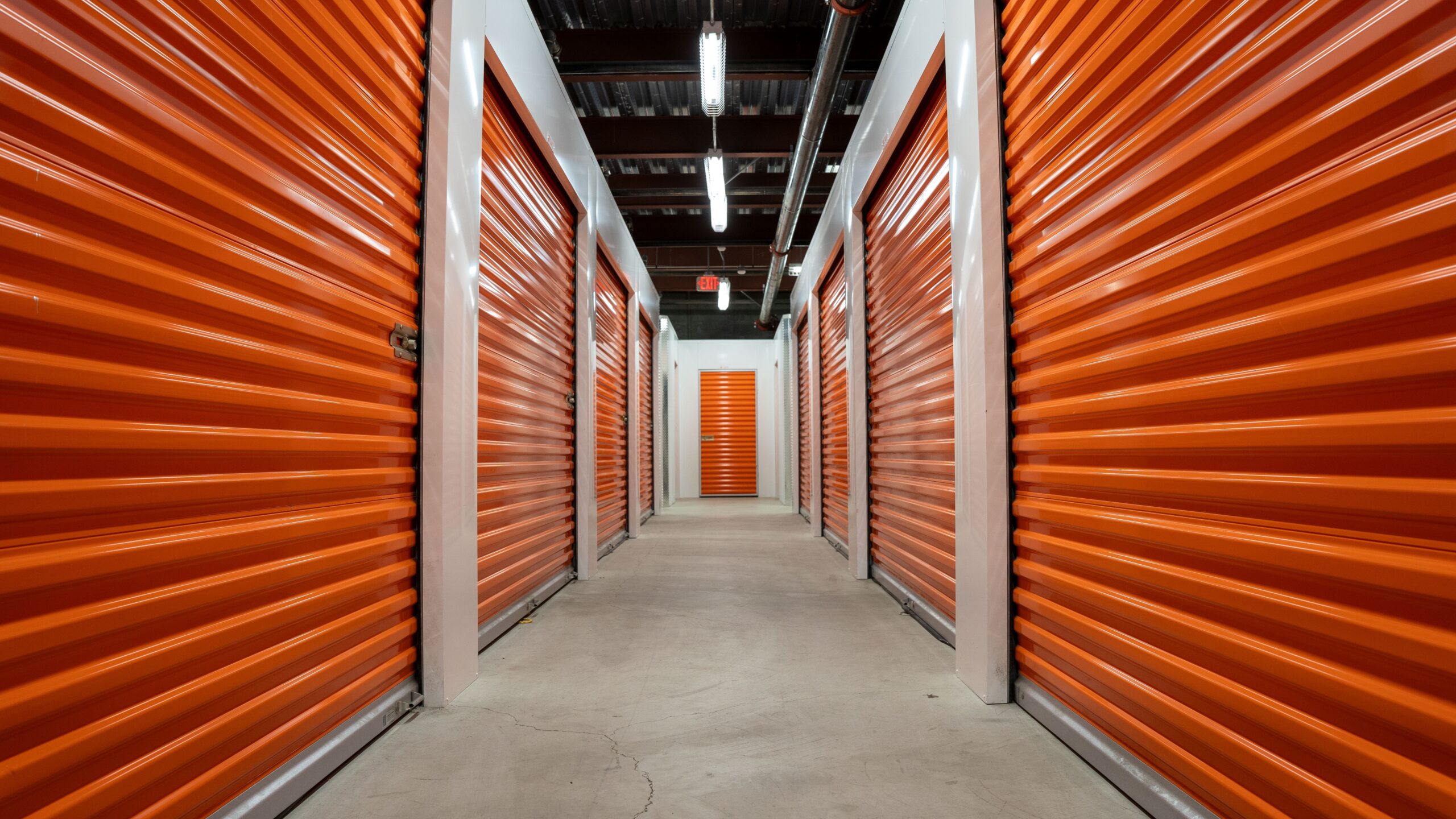Article takeaways
- Most riders make one common mistake that can cost hundreds in repairs over time, but it’s easily avoided with the right storage approach.
- There’s more to storing your dirt bike than just finding space—how you prep it could make or break your next ride.
- A well-organized storage unit can double as a smart maintenance hub, keeping your gear ready and your bike protected year-round.
Why Dirt Bike Storage Matters
Your dirt bike isn’t just a machine—it’s your adrenaline fix, your stress reliever, your off-road escape, and your investment in fun. But when the riding season ends or your garage space runs low, finding a secure, weather-resistant, and convenient place to keep your bike can be a challenge. That’s where a dedicated dirt bike storage unit comes in.
Using a storage unit for your dirt bike offers more than convenience. It helps protect your vehicle from environmental hazards like moisture, extreme temperatures, and pests. Without proper storage, your bike can suffer from rust, corrosion, drained batteries, or engine damage—all of which are expensive to fix and easy to avoid.
Self-storage gives dirt bike owners the flexibility to store their bikes short or long-term in a clean, secure environment with options like climate control, added security, and 24/7 access. It’s a smart way to preserve performance, save garage space, and avoid costly repairs.
In this guide, we’ll cover everything from selecting the best dirt bike storage unit to prepping your bike and keeping it in peak condition while it’s stored. Let’s make sure your ride is ready to roar when the trail calls again.
Benefits of Using a Dirt Bike Storage Unit
Storing your dirt bike in a storage unit isn’t just about convenience—it’s a strategy that safeguards your investment. Dirt bike storage units help you reclaim valuable garage space and keep your home more organized, especially if you also store tools, vehicles, or sports gear in there. For those with limited space or multiple bikes, it’s a no-brainer.
These storage solutions offer consistent protection from harsh environmental elements such as rain, snow, humidity, and dust, which can damage dirt bikes, ATVs, and other off-road vehicles alike. More importantly, most indoor vehicle storage units come with enhanced security features like surveillance, keypad access, and individual unit locks, which add a critical layer of theft prevention.
Seasonal riders also benefit from the flexibility and affordability of off-site storage. Rather than risk engine trouble or tire damage from improper home storage, a dirt bike storage unit pays off long-term by preserving bike performance and reducing repair costs. It’s a reliable, low-maintenance way to ensure your dirt bike stays adventure-ready all year.
What Size Storage Unit Do You Need for a Dirt Bike?
Dirt bike storage needs can vary based on the bike’s make, size, and accessories. While a single bike typically fits in a 5×10 unit, storing two or more bikes, or including gear and a workbench, may require a 10×10 or larger space. Planning for growth, additional equipment, or future upgrades will help ensure you’re not squeezed for space later on.

When comparing units, consider whether a climate-controlled option is worth it for your situation. These are ideal for long-term storage and extreme climates, as they help prevent moisture damage and temperature-related wear. You’ll also want to look for practical features like 24/7 access, drive-up convenience, and robust security, including keypad entry, surveillance cameras, and gated premises.
These features may cost a bit more upfront, but they often deliver a higher return on investment (ROI) by reducing future dirt bike maintenance expenses and protecting your vehicle more effectively over time.
Storage Tips for Dirt Bike Owners
Before moving your bike in, prepare your unit as though you’re setting up a small garage. Begin by thoroughly cleaning the floor and inspecting for moisture or leaks. Place your dirt bike on pallets or a motorcycle mat to avoid prolonged contact with the concrete floor, which can draw moisture into the tires and lower frame. Desiccants or small dehumidifiers can also be used to minimize humidity levels in the unit.
If you’re planning to use a battery tender or occasionally perform light maintenance, check if the unit includes access to electrical outlets. When organizing your gear, take advantage of wall hooks, clear bins, and shelving units to keep essentials tidy and within reach. Storing gear vertically can maximize limited floor space, and if you have more than one bike, consider a staggered layout that allows easy access without cramming. Thoughtful organization is key to making your bike storage unit both safe and efficient.
How to Prepare Your Dirt Bike for Storage
Prepping your dirt bike for long-term storage isn’t just about slapping on a cover. It’s about protecting every system on your ride from damage that can build up over time. A comprehensive preparation routine ensures your bike is ready to perform when you’re ready to ride again. Proper prep also plays a major role in reducing future dirt bike maintenance needs and extending the life of your vehicle.
Here’s a handy checklist to guide you through the process:
| Step | Instructions | |
|---|---|---|
| Thoroughly wash the bike, especially around the chain, under the fenders, and suspension. | ||
| Use a microfiber towel or compressed air to ensure no moisture is left behind. | ||
| Apply chain lube and lubricate cables and pivot points to avoid rust. | ||
| Fill the tank and add stabilizer, or drain completely for longer storage. | ||
| Turn off the ignition and remove keys. Ensure the bike is fully cooled. | ||
| Fog the engine and change the oil to prevent corrosion inside the motor. | ||
| Clean or replace to avoid mold or dust accumulation. | ||
| Cover the exhaust openings to keep pests and debris out. | ||
| Remove the battery or connect to a trickle charger. | ||
| Slightly overinflate tires and prop the bike on a stand to prevent flat spots. | ||
| Use a breathable motorcycle cover for dust and moisture protection. |
Going through this preparation checklist can save you from costly repairs down the road and ensure your bike is always adventure-ready.
Maintaining Your Bike While It’s in Storage
Even in storage, your dirt bike still needs occasional attention to prevent long-term wear and tear. Plan to visit your storage unit at least once a month. During each visit, check tire pressure, inspect for leaks, verify the battery or charger is functioning, and make sure your protective cover remains secure. These small actions help catch problems early and keep your maintenance routine on track.
Adjust your care based on season and climate. If your unit isn’t climate-controlled, consider adding desiccants or insulation to combat moisture or temperature shifts. Tracking your efforts with a simple maintenance log—recording dates, tasks completed, and observations—will make it easy to stay on top of regular upkeep.
Here’s a quick maintenance visit checklist:
- Check tire pressure and reposition your dirt bike if necessary
- Inspect for signs of moisture, pests, or leaks
- Confirm trickle charger is working (if applicable)
- Re-lubricate key components if needed
- Review and update your maintenance log
- Verify emergency contact information and spare key placement
By staying consistent with maintenance visits, you’ll ensure that your dirt bike stays protected and ready to ride year-round, even when it’s tucked away in storage.
Storage Unit Hacks for Dirt Bike Storage Units
Your dirt bike storage unit can be more than just a place to park your bike—it can double as a compact, functional garage. Store your riding gear—helmets, boots, gloves, and jerseys—neatly alongside your bike using clear storage bins and wall-mounted hooks. Categorizing items helps streamline packing and prepping when it’s time to ride.
To store tools efficiently, use a pegboard or mobile toolbox that fits within your unit’s footprint. For spare parts, label stackable bins or drawers with contents like air filters, brake pads, or spark plugs. If space allows, a small foldable workbench can help you perform light maintenance without clutter. Balance is essential: keep regularly accessed items at the front of the unit while stowing away seasonal or backup gear toward the back or on elevated shelving.
With some smart organization, your bike storage unit becomes a streamlined, accessible maintenance zone, supporting both protection and convenience in one space.
Planning Long-Term Dirt Bike Storage Strategies
When your dirt bike is going to be off the trail for more than a few months, you’ll want to have a slightly different storage strategy ready. You may have already prepped your bike and organized your storage unit, but long-term storage calls for a few extra considerations that can preserve your investment over time without becoming repetitive busywork.
Start with your environment. If you’re not using a climate-controlled unit, keep an eye on changing conditions and reinforce your moisture control methods with desiccants or breathable covers. Reorganize your layout to group gear and tools by seasonal or infrequent use. Labeling bins and jotting down inventory notes will save time and confusion months down the road. Keep a dedicated toolkit in an easy-to-access location so that routine check-ins, like adjusting tire pressure or tightening bolts, don’t become a hassle. And even though the bike’s not in use, small routines like rotating tire positions or rechecking the trickle charger help prevent flat spots and electrical surprises.
Bonus Tip: Keep a weatherproof folder or envelope in your unit with your maintenance log, spare keys, registration, and a printed copy of emergency contacts. In the rare case someone else needs to access your unit or check on the bike, you’ll be glad it’s all right there.
Store Smarter, Ride Longer
Dirt bike storage isn’t just about protecting your vehicle—it’s about extending its life, preserving its performance, and saving money on future repairs. From freeing up space at home to shielding your bike from weather damage and theft, a dedicated dirt bike storage unit delivers clear value.
Take time to create a personalized storage plan based on your riding schedule, local climate, and maintenance needs. The cost of storage is small compared to the damage caused by rusted components, drained batteries, or warped tires.
Ready to take the next step? Explore our complete guide to vehicle storage or compare storage unit sizes with our 5×10 and 10×10 unit guides. Then, visit Storage.com to find a dirt bike storage solution that’s right for you.
Whether you’re storing your bike for the off-season or looking for a long-term setup, the right storage plan can keep your ride in prime condition—and ready to hit the trail whenever you are.






